Environments Study: One Second of Attention has More Outcome Value in Some Contexts than in Others
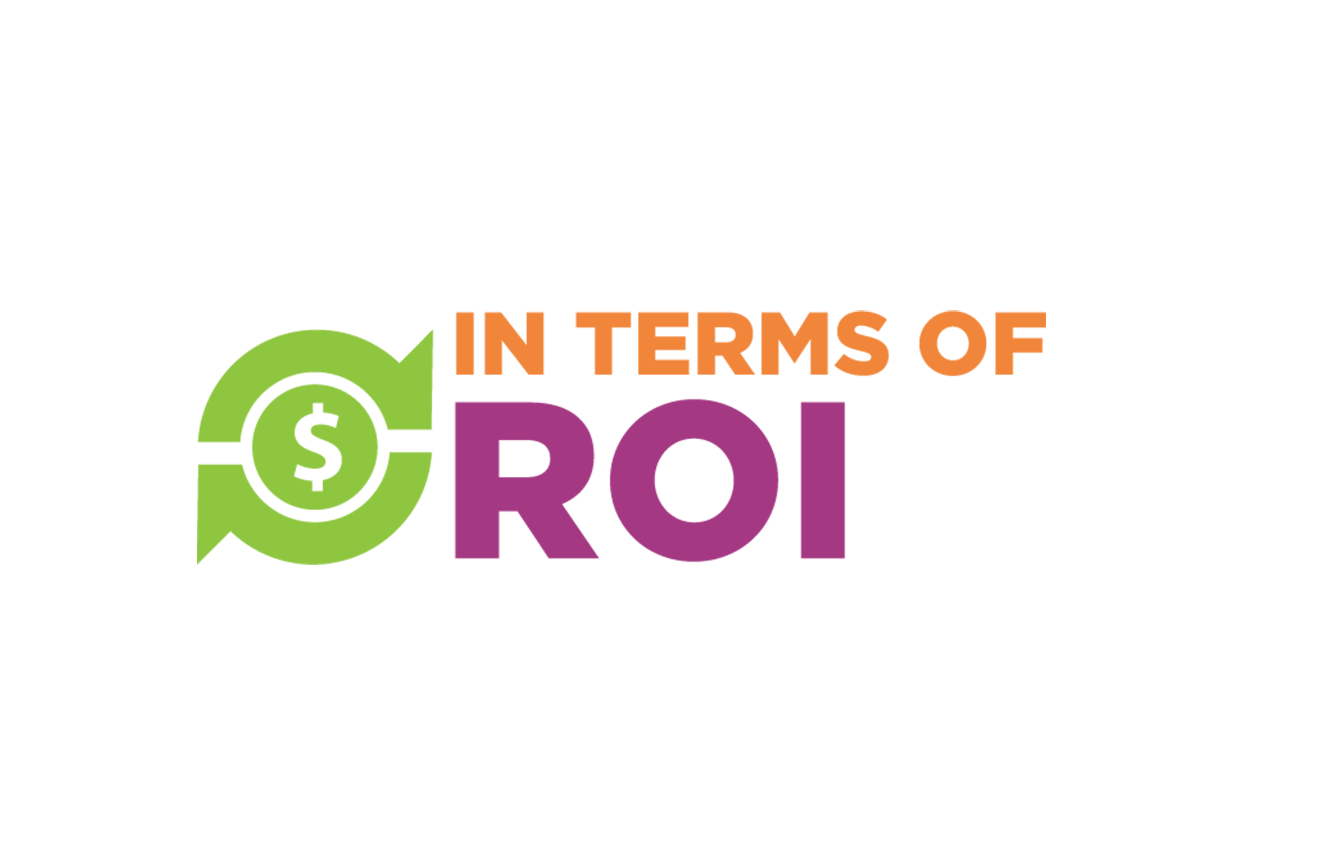
Digital context effects have been studied before, but the studies we have reported here have been specific to branded platforms, rather than to generic types. Until now, the prevailing market structure recognized by the industry has been video vs. display, but the explosion of new ad formats has generated many variations on these themes – with potentially very different norms for attention and other consumer behaviors.
Through my firm, Bill Harvey Consulting, I was recently part of a research team commissioned by Meta to understand distinct video environments, and the typical consumer behaviors and brand outcomes associated with each. The team conducting the experimental study was led by Realeyes and also included representatives from Eye Square, under the direction of Meta’s Ads Research Lead, Sophie Macintyre.
Fifteen different contexts were studied for each of five brands in as many verticals, creating a 75-cell randomized experiment. In each cell, respondents using their own smartphones were able to choose what to look at within the context type assigned in that cell. The study looked across 16,835 ad impressions from 6,076 participants.
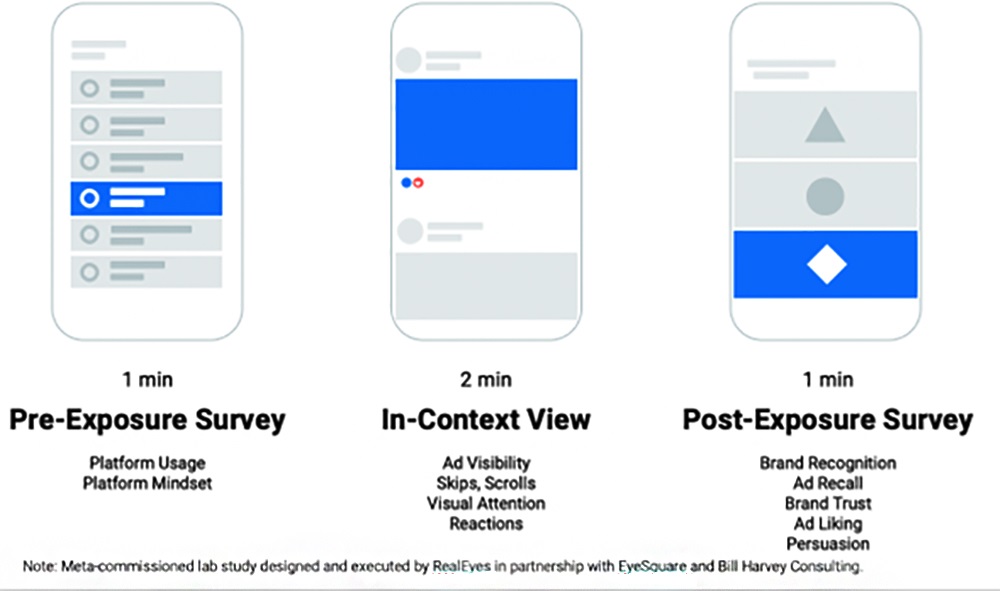
These were the 15 different placement types tested:
- “Feed” – Vertically scrolling feed with ad units less than full screen and ads in between content.
- Placements: Facebook Feed, Instagram Feed, Twitter Feed
- “Short Form” – Vertically or horizontally scrolling feed with full screen ads in between content.
- Placements: Facebook Stories, Instagram Stories, Instagram Reels, Snapchat Stories, TikTok Brand Takeover*, TikTok Feed, TikTok Topview*, YouTube Shorts
- “Stream” – Television program or user generated video viewed in online video player with ad appearing before or within the program/video (pre-roll or mid-roll).
- Placements: Facebook InStream*, Hulu Pre & Mid Roll*, YouTube Non-skippable*, YouTube Skippable*
Note placements with an asterisk (*) had some or all unskippable time.
The stream type environment had more seconds of attention than short form or feed, but for all of the outcome measures (except for ad recall – i.e., recalling the creative – which was somewhat more correlated with attention), there was no significant difference in outcomes across the three types:
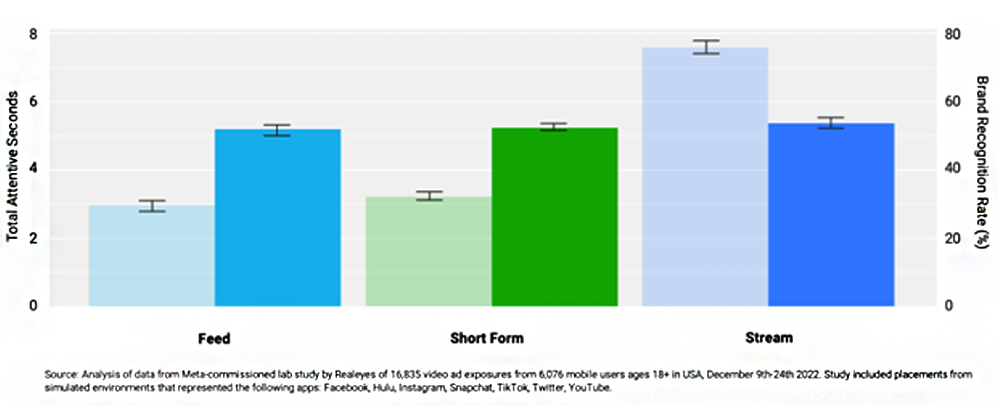
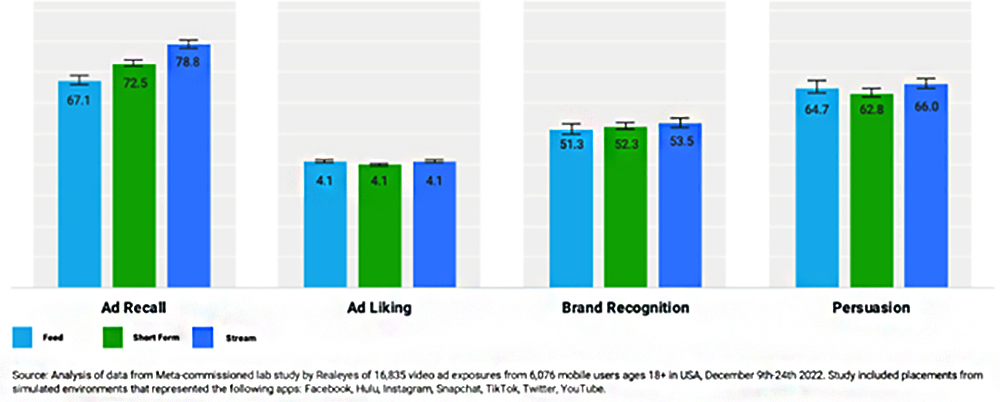
The value of one second of attention was higher in feed and short form than in stream. That’s why the higher average seconds of attention in stream was equalized in terms of three of the four outcome measures.
How would one explain why feed and short form are able to do more with less? Neuroscience research has shown that ads seen in scrolling conditions require less time to generate recall than those seen in stationary conditions. Given this, as well as the higher engagement we saw in feed and short form environments, we suggest that the user behavior characteristic of these experiences is “sorting” while scrolling through ads and content: the user is cognitively focused on paying concentrated attention so as to be able to scroll down and decide as quickly as possible, deciding again and again to reject/pass by items, until something strikes one’s fancy. In that heightened state of concentration, fewer seconds of attention would be needed to decide whether or not an item is appealing. This suggests that the degree or nature of attention is what makes the difference between stream and the other two major digital environment types.
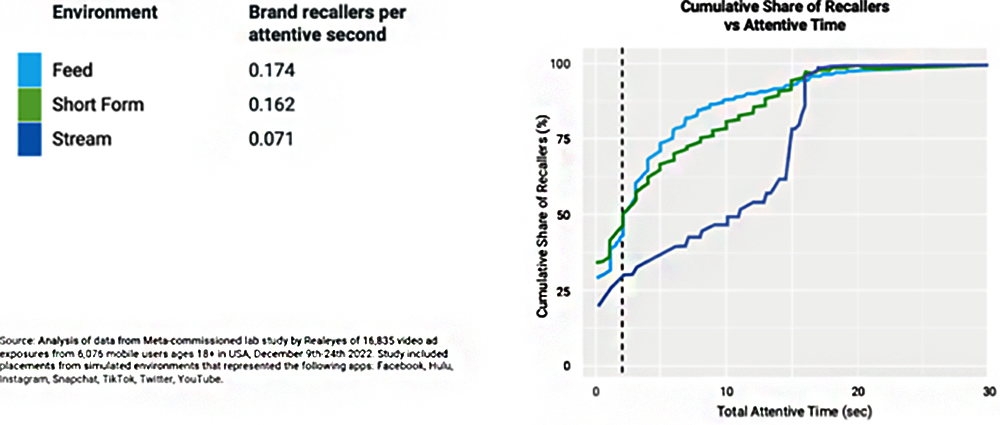
The main conclusion of this study is that seconds of attention is not the right measure to use across context types, because certain context types exert strong effects which constrain attention seconds, without appearing to reduce the outcomes measured, except for ad recall. The most appropriate use of attention seconds would be to distinguish alternative placements (and alternative creative executions) within feed, within short form, and within stream, where the effects of the type are equalized across the alternatives.
In my view, this conclusion has many important implications. In order to fulfil the desire for an attentiveness measure that can be applied as a yardstick across all types of media environments, that ultimate measure of attention would need to be sensitive to all aspects of attention, including audio as well as visual, active as well as passive, forced vs. unforced (probably on a continuous rather than binary scale), and might need to measure saccadic movements as well as fixations. Still, attention would remain a necessary but not sufficient measure of advertising success, and so future studies ought to also measure emotion, attitude shift/persuasion, and actual incremental sales effect. In the end, as a prebuy tool especially for programmatic digital, attention should be combined with other proven sales effect predictors in order to maximize positive business effects not just fleeting attention successes.
An Important tactical conclusion from the study is that creative executions in digital need to be front loaded so that both the video and audio establish both attention and brand identity in the first two seconds. This suggests that 15s and 30s with strong TV reach behind them can be cut down for use in digital to reprise the experience of the whole story when an iconic moment from those ads appear in the first couple of seconds of a 5 or 6 second ad. Some readers may recall the famous Imagery Transfer studies done by radio to prove that radio can bring back the visual experience remembered from having seen the ad before on TV. This is now applicable today also to digital where the window of attention is shortened and intensified rather than the visuals being taken away entirely as in the case of radio.
The characteristic profiles of attention over time that we saw in different digital environments has been pointed out before by other attention researchers. When Meta’s Sophie MacIntyre and myself presented these findings at ARF AUDIENCExSCIENCE 2023 and at ARF ATTENTION 2023, other measurement companies in the audience commented enthusiastically on the high level of agreement between our overall findings and their own. We were heartened to receive such positive feedback and take this as an indication of the robustness of this study.
Musing upon the feed and short form attention profiles, I’ve hypothesized that digital might excel at retaining current brand users and increasing their usage rate, a supposition which appears to be supported by the Nielsen NCS Five Keys update report of 2023 as I’ve analyzed here.
The report, “Decoding Digital Video Environments,” contains a discussion of outstanding research questions which recommends that it will be crucial to measure attention qualities, not just attention duration – for example, attention to UX elements like the skip button during forced time. Several methods were tested to break out this phenomenon after the fact but, in the end, none were fully satisfactory and this shall need to be addressed by a future study.
The amount of insight contained in the complete report is far more extensive compared to what we are able to report in this space, and the complete report is available from the IAB website here.
Posted at MediaVillage through the Thought Leadership self-publishing platform.
Click the social buttons to share this story with colleagues and friends.
The opinions expressed here are the author's views and do not necessarily represent the views of MediaVillage.org/MyersBizNet.


